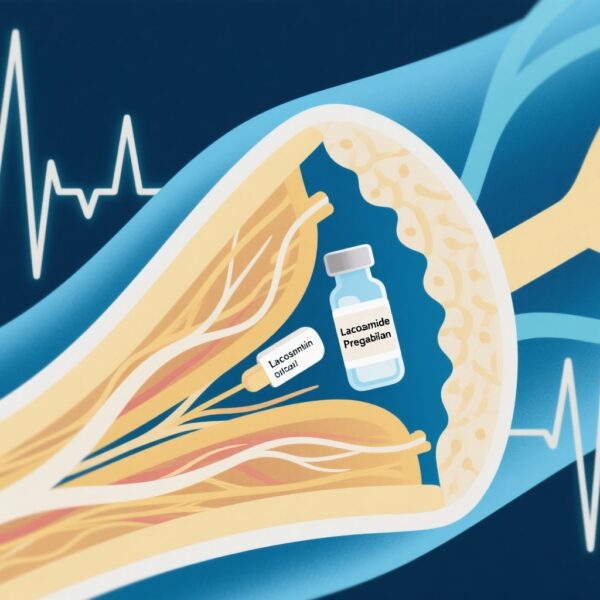Highlights
– In a national Japanese inpatient database (July 2010–March 2022), 8,184 peripartum women were admitted to ICUs; median age 34 years; 53.2% delivered by cesarean section.
– Hemorrhage was the leading cause of ICU admission (52.6%); major interventions included blood transfusions (71.5%), mechanical ventilation (28.0%), and transcatheter arterial embolization (18.0%).
– All-cause in-hospital mortality was low at 1.1%, but non-survivors had higher rates of amniotic fluid embolism (AFE), cardiovascular/cerebrovascular disease, severe infection, pulmonary disease, trauma, and suicide.
Background
Pregnancy and the peripartum period are times of substantial physiological adaptation. Circulatory, hematologic, and endocrine changes that support pregnancy may, in the face of complications, predispose women to life-threatening events. Globally, maternal mortality and severe maternal morbidity remain public health priorities. While many critically ill obstetric patients are managed outside intensive care units (ICUs), a significant minority require ICU-level support for hemorrhage, hypertensive disorders, sepsis, cardiopulmonary failure, thromboembolism, or rare catastrophic events like amniotic fluid embolism (AFE).
Japan has unique demographic trends relevant to maternal health: increasing maternal age, wider use of assisted reproductive technologies, and changing obstetric practice patterns. However, comprehensive nationwide descriptions of obstetric ICU admissions have been limited. The study by Naruse and colleagues (Crit Care. 2025) leverages a large, nation‑spanning administrative inpatient database to profile the causes, management, and outcomes of peripartum ICU admissions in Japan over >11 years.
Study design
This was a retrospective observational analysis using the Japanese Diagnosis Procedure Combination (DPC) inpatient database, capturing >90% of tertiary emergency hospitals from July 2010 through March 2022. Inclusion criteria were patients admitted to an ICU who delivered during the hospitalization or within one week before admission. The investigators extracted demographic data, comorbidities, principal causes of ICU admission, key interventions (for example, blood transfusion, mechanical ventilation, transcatheter arterial embolization), and clinical outcomes including in‑hospital mortality. Comparative analyses examined differences between survivors and non‑survivors.
Key findings
Population and demographics
A total of 8,184 peripartum patients from 195 institutions met inclusion criteria. Median maternal age was 34 years (IQR 30–38), reflecting the higher maternal age distribution in Japan. Cesarean delivery occurred in 53.2% of the cohort, a higher proportion than baseline obstetric populations, consistent with the concentration of higher-risk births in tertiary centers.
Causes of ICU admission
Hemorrhage was the most frequent primary diagnosis prompting ICU care, accounting for 52.6% of admissions. Hypertensive disorders of pregnancy (including severe preeclampsia and eclampsia) were the second most common cause (16.7%). Other causes included cardiopulmonary complications, sepsis, thromboembolic disease, amniotic fluid embolism, and trauma-related cases.
Interventions delivered
Resuscitative and critical care interventions were common. Over 70% of patients received blood transfusions, indicating the centrality of hemorrhage management. Mechanical ventilation was required in 28.0% of cases, reflecting respiratory or neurologic compromise. Transcatheter arterial embolization (TAE) — an interventional radiology technique increasingly used for obstetric hemorrhage control — was performed in 18.0% of patients, underscoring the role of minimally invasive hemorrhage control in contemporary practice.
Outcomes
Overall in-hospital mortality was 1.1%, a relatively low figure given the severity of illnesses represented among ICU-admitted obstetric patients. Comparative analyses revealed that non-survivors had a lower proportion of hemorrhage‑related admissions but a markedly higher prevalence of AFE, cardiovascular and cerebrovascular disease, severe infection, pulmonary disease, trauma, and suicide. These diagnoses are known to carry high short‑term mortality due to abrupt cardiovascular collapse (AFE), refractory sepsis, severe pulmonary failure, or catastrophic neurologic events.
Clinical and health-system implications
1) Hemorrhage remains the dominant, yet often survivable, reason for ICU admission
That hemorrhage accounted for over half of ICU admissions highlights the enduring importance of postpartum hemorrhage (PPH) preparedness. The high utilization of transfusion and TAE suggests that when rapid recognition and multimodal interventions are available, many hemorrhagic cases can be stabilized without progression to death. This supports ongoing investments in hemorrhage protocols, rapid transfusion systems (including massive transfusion protocols tailored to obstetrics), access to interventional radiology, and team-based simulation training.
2) Rare but catastrophic conditions (AFE, cardiopulmonary collapse, severe sepsis) drive mortality
Non-survivors’ overrepresentation of AFE, cardiopulmonary disease, sepsis, and trauma emphasizes that while hemorrhage is the most common reason for ICU admission, other etiologies confer higher fatality. AFE classically presents with sudden hypoxia, hypotension, and coagulopathy; outcomes hinge on immediate supportive care including advanced cardiac life support, aggressive correction of coagulopathy, extracorporeal support when available, and rapid multidisciplinary coordination.
3) Resource allocation and system design
Findings support centralization of high-acuity obstetric care in centers with rapid access to blood banks, interventional radiology, and ICU-level support. For regions without on-site interventional radiology, protocols for swift transfer and preemptive arrangements may be lifesaving. Staffing models that ensure 24/7 availability of experienced obstetric, anesthetic, and critical care personnel are also implicated.
4) Prevention and early recognition
Prevention strategies remain fundamental: active management of the third stage of labor, risk assessment for placental attachment disorders, antenatal planning for placenta accreta spectrum, and readiness for cesarean hysterectomy are crucial. Early warning scoring systems, routine peripartum risk reassessment, and standardized escalation pathways can help detect deterioration before ICU-level interventions are required.
Expert commentary and interpretation
The Naruse et al. dataset provides valuable, nationally representative insights into obstetric critical care in Japan. The predominance of hemorrhage aligns with global literature identifying PPH as a leading contributor to severe maternal morbidity and a key driver of ICU utilization. Importantly, the relatively low mortality suggests that when tertiary care resources are available, many life-threatening obstetric complications are survivable.
However, the high mortality associated with AFE and cardiovascular/cerebrovascular events calls attention to diagnostic uncertainty and the need for specialized cardiopulmonary support capacities (including extracorporeal membrane oxygenation where appropriate). For severe sepsis, adherence to sepsis bundles adapted for pregnancy and early source control remain central.
Limitations and generalizability
Readers should interpret findings in the context of common limitations of administrative database studies. The DPC database is strong in coverage of tertiary emergency hospitals (>90% captured), meaning results likely reflect care of higher‑acuity patients but may not represent milder severe morbidity managed on obstetric wards or smaller centers. Administrative coding may misclassify diagnoses or miss nuances of clinical presentation (for example, physiologic severity indices such as SOFA scores were not available). Causality cannot be inferred in this retrospective design. The dataset also lacks granular timing details for onset of complications relative to delivery in some instances, and post-discharge outcomes (long‑term maternal morbidity) are not captured.
Despite these limitations, the large sample size, extended time span, and inclusion of detailed procedure codes (e.g., TAE, mechanical ventilation) provide robust descriptive epidemiology that can inform systems planning and targeted quality improvement initiatives.
Recommendations and priorities for practice and research
Based on the study’s results and contemporary best practice, the following priorities are suggested:
- Implement and maintain standardized hemorrhage care bundles and obstetric massive transfusion protocols with crisis checklists and multidisciplinary simulation training.
- Ensure rapid access to interventional radiology or formalized transfer pathways for centers without on-site capabilities.
- Strengthen early-warning systems and escalation protocols for hypertensive disorders, sepsis, and cardiopulmonary compromise in peripartum women.
- Develop prospective severe maternal morbidity registries that link perinatal and critical care data to enable risk modelling, evaluation of interventions, and long-term maternal outcome assessment.
- Study the utility and cost-effectiveness of extracorporeal life support in catastrophic obstetric cardiopulmonary failure and the role of targeted therapies for AFE and obstetric sepsis.
Conclusion
In this nationwide Japanese analysis of peripartum ICU admissions, postpartum hemorrhage was the predominant cause of critical care utilization, accounting for over half of cases. Most patients required transfusion and many received interventional radiology or ventilatory support; overall in-hospital mortality was low (1.1%). However, mortality was concentrated in patients with AFE, major cardiopulmonary or cerebrovascular disease, severe infection, and trauma. These findings underscore the dual priorities of maximizing hemorrhage preparedness across obstetric services and ensuring tertiary centers are equipped to manage the less frequent but highly lethal conditions that drive deaths. Continued emphasis on system readiness, multidisciplinary coordination, and prospective data collection will be essential to further reduce preventable maternal mortality and morbidity.
Funding and trial registration
This was a retrospective observational study using an administrative database; prospective trial registration was not applicable. Funding statements were those reported in the primary manuscript (see reference).
References
1. Naruse S, Nakajima M, Aoki Y, Shigemi D, Kamijo K, Kaszynski RH, Ohbe H, Sasabuchi Y, Aso S, Matsui H, Fushimi K, Nakajima Y, Yasunaga H. Clinical features and outcomes of peripartum obstetric patients admitted to the intensive care unit: A nationwide inpatient database in Japan. Crit Care. 2025 Aug 14;29(1):358. doi: 10.1186/s13054-025-05597-z. PMID: 40813688; PMCID: PMC12355807.
2. World Health Organization, UNICEF, UNFPA, World Bank Group and the United Nations Population Division. Trends in maternal mortality 2000 to 2017: estimates by WHO, UNICEF, UNFPA, World Bank Group and the United Nations Population Division. Geneva: World Health Organization; 2019.
(Readers seeking more detail should consult the full Naruse et al. manuscript for supplementary tables and analytic methods.)



